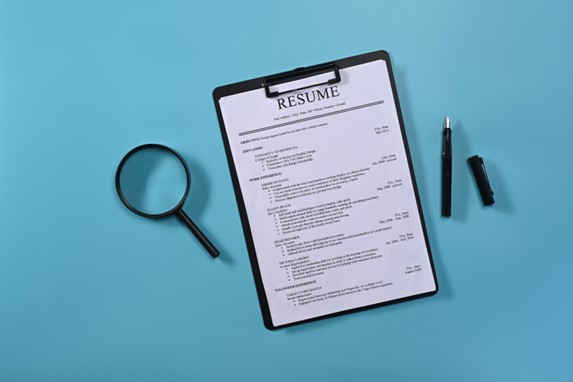In today’s increasingly regulated, security conscious and competitive job market, pre-employment screening in HR recruitment has become a crucial process. This screening not only ensures that applicants possess the necessary qualifications but also helps mitigate potential risks to the organisation.
The Purpose of Pre-Employment Screening
Verifying Credentials
One of the main objectives of pre-employment screening is to confirm the credentials of prospective employees. It helps verify the educational background, prior work experience, and professional licenses claimed by the candidate.
Uncovering Potential Red Flags
Another significant aspect of pre-employment screening is identifying potential red flags, such as criminal history or a problematic employment record. This can help safeguard the organisation against potential threats.
The Importance of Pre-Employment Screening in HR Recruitment
Ensuring a Good Fit
In HR roles, pre-employment screening is key to identifying individuals who will fit well within the organisational culture. HR professionals are often the backbone of a company, influencing its culture, morale, and productivity, making this aspect critical.
Reducing Employee Turnover
Pre-employment screening helps reduce employee turnover by ensuring the right person is hired from the onset. This can save significant time, money, and resources in the long run.
Mitigating Legal and Reputation Risks
As HR professionals are entrusted with sensitive company and employee information, pre-employment screening is essential in mitigating legal and reputation risks. A careful screening process ensures that those entrusted with such responsibilities are reputable and reliable.
Pre-Employment Screening Methods
Background Checks
Background checks are a common screening method, encompassing everything from criminal records to credit histories. They provide a comprehensive overview of a candidate’s history.
Psychometric Testing
Psychometric testing provides insights into a candidate’s personality, cognitive abilities, and work style. It is particularly useful in HR roles where interpersonal skills and emotional intelligence are key.
Skills Assessments
In HR roles, this might involve knowledge of employment laws, proficiency in HR management software, or other specific competencies required for the role.
Reference Checks
Reference checks are a critical component of Pre-Employment Screening in HR Recruitment. Speaking with previous employers or colleagues can provide valuable insight into a candidate’s work ethic, professionalism, and suitability for the HR role.
The Future of Pre-Employment Screening in HR Recruitment
The Rise of Social Media Screening
As social media becomes increasingly integral to our lives, it’s becoming a valuable tool in pre-employment screening. Employers are beginning to examine candidates’ online presence to gain a more holistic understanding of their behaviour and personality.
The Impact of AI and Automation
AI and automation are reshaping pre-employment screening. Automated screening tools can speed up the process, reduce human error, and ensure consistency in the evaluation of candidates. Moreover, AI can aid in identifying potential fit and future performance based on historical data.
Summary
Pre-Employment Screening in HR Recruitment plays a crucial role in the recruitment process. By verifying credentials, identifying potential red flags, and assessing fit, it aids in hiring competent and reliable professionals, thereby reducing employee turnover and mitigating legal and reputation risks. With advancements in technology, the future of pre-employment screening looks to be even more comprehensive and efficient.
Frequently Asked Questions
What is the main purpose of pre-employment screening in HR recruitment?
The main purpose of pre-employment screening in HR recruitment is to verify the credentials of potential employees, uncover potential red flags like criminal history or problematic employment record, and ensure the candidate is a good fit for the organisational culture.
How does pre-employment screening contribute to reducing employee turnover?
Pre-employment screening helps reduce employee turnover by making sure the right person, who is a good fit for the role and the company culture, is hired from the beginning. This process saves significant time, money, and resources in the long run.
What methods are commonly used in pre-employment screening?
Common pre-employment screening methods include background checks, which cover criminal records to credit histories; psychometric testing, which gives insight into a candidate’s personality, cognitive abilities, and work style; skills assessments, which gauge a candidate’s knowledge of employment laws and proficiency in HR management software; and reference checks, which provide insight into a candidate’s work ethic and professionalism.
How is technology impacting the future of pre-employment screening in HR recruitment?
Technology is having a significant impact on pre-employment screening. Social media screening is increasingly being used to understand a candidate’s behaviour and personality. Additionally, AI and automation are being utilised to speed up the screening process, reduce human error, and ensure consistency in candidate evaluations.
How does pre-employment screening mitigate legal and reputation risks for an organisation?
Pre-employment screening mitigates legal and reputation risks by ensuring that the individuals entrusted with sensitive company and employee information are reputable and reliable. The process helps identify and avoid potential threats to the organisation.
The Benefits of Working with a HR Recruitment Agency
Due to the importance of HR roles, it’s crucial to find the right people to fill them, and that’s why many organisations choose to work with specialist HR recruitment agencies. These specialist agencies who focus solely on finding high calibre HR professionals provide a wide range of benefits over and above an organisation undertaking this activity internally.
Access to a Wide Talent Pool
Quality Candidates
Recruitment agencies have access to a broad network of potential candidates, some of whom may not be actively seeking a new role but may be interested if the right opportunity comes along. This wide pool increases the likelihood of finding high-quality candidates that fit your needs.
Saves Time
Finding the right candidate for high-level HR positions can be time-consuming. However, with a recruitment agency, the process is streamlined, as they handle the initial steps like screening and first-round interviews.
Specialised Knowledge and Expertise
Recruitment agencies often have specialised knowledge and expertise in the HR sector. They know what skills, qualifications, and experience are necessary for high-level HR positions, which enables them to find the perfect candidate for the job.
Efficient Process Management
Recruitment agencies manage the recruitment process from start to finish. They handle everything from job postings, vetting candidates, conducting initial interviews, to salary negotiations and job offers, making the process efficient and stress-free.
Confidentiality and Professionalism
Recruitment agencies maintain a high level of confidentiality, ensuring that the details of your search remain private. Additionally, they conduct their business with the utmost professionalism, maintaining your company’s reputation in the market.
Case Study: Equal Experts, London
Having grown to over 1,000 people globally, Equal Experts were ready to hire a People Leader who would bring coherence to the network: their employees, contractors and alumni.
They were seeking an individual who would improve the culture every day; a person who would help them as a guide, a coach and a torch bearer. Someone who would gain the network’s trust and help move towards concrete achievements; measuring and improving psychological safety so that teams can have challenging but safe conversations to reach happy outcomes.
PEEQ Recruitment Agency was appointed to fill this position. For full details of this project and the outcome, please read the full CASE STUDY.
How to Choose the Right Recruitment Agency
Choosing the right recruitment agency involves considering factors such as their reputation, success rate, area of expertise, and previous client reviews. For more information about choosing the right recruitment agency, please read THIS article.
Why Choose PEEQ HR Recruitment Agency?
The average fill rate amongst HR Recruitment Agencies is 46%, but at PEEQ our average fill rate sits above 90%, So you are twice as likely to make a hire if you choose PEEQ.
This is due to two reasons:
Firstly, we only partner with our clients on an exclusive basis, so we ‘own the responsibility’
Secondly, we don’t employ recruiters. Instead, we work with trusted and proven freelance HR recruiters, to hire for our clients.
We give them the tools and infrastructure to be successful, and the rest is down to their magic and experience. Our Associates are not employed by us and only get paid for making a successful hire.
This makes them incredibly tenacious and committed to finding the best talent, which is why our fill rate sits above 90%, compared to the industry average of 46%.
More reasons to work with PEEQ
Psychometric insight reports
Obtain a unique insight into your candidates’ Cultural Fit, Strengths, Decision Making and Resilience through our accredited assessments.
Post-hire executive coaching
Set your hire up for success with a tailored coaching programme that helps them achieve their full potential personally and professionally.
Up to 6 Month Placement Guarantees
Confidently make your hire under our 2, 3 or 6 Month Placement Guarantee; safe in the knowledge that we’ll offer you a free replacement if they leave within our pre-agreed time period.
BeTalent Accredited Approach
We are proud to offer the BeTalent Accredited approach that enables us to deliver scientific candidate assessment, in accordance with the British Psychological Society standards.
This solution is for you if you want:
- An objective way to determine who is the best fit for your role
- A comprehensive understanding into your new hire before they start
- Peace of mind that you’ve made the right hiring decision.
Get in Touch with PEEQ HR Recruitment
We are here to help you. If you have any questions, queries or would like to discuss a potential hire, a job application, or require clarification on anything detailed on our website, then we would love to hear from you.
Please feel free to call, email or complete the form provided and we will assist you.




